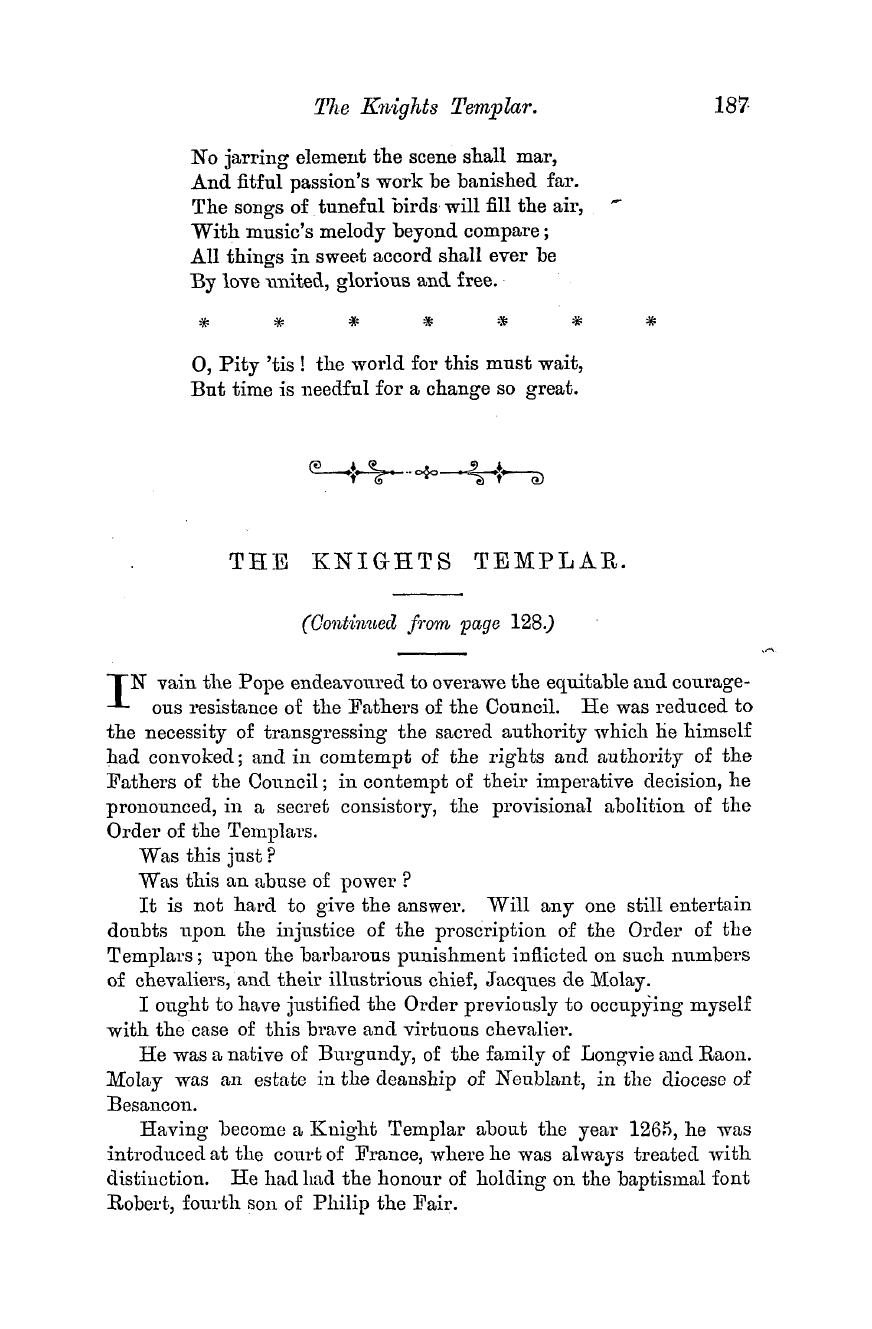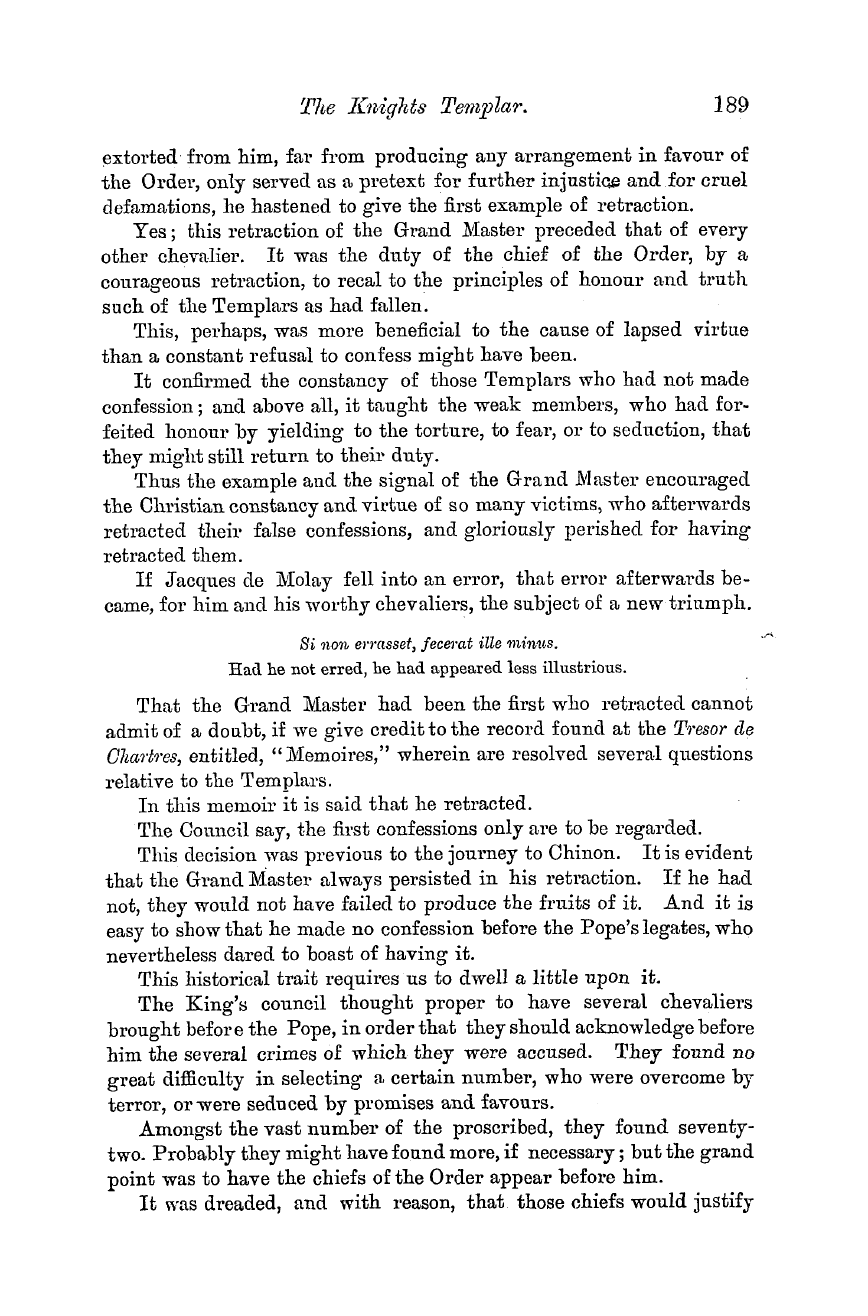-
Articles/Ads
Article THE ROMAN COLLEGIA. Page 1 of 6 →
Note: This text has been automatically extracted via Optical Character Recognition (OCR) software.
The Roman Collegia.
THE ROMAN COLLEGIA .
THEMASONICMONTHLY.New Series of the "Masonic Magazine "
BY MASONIC STUDENT . A LONG conversation with Bro . Gould the other day , " anent " - £ * - the Roman " Collegia , " and the Fratres Arvales , sent me to a
careful study , as time allowed , of Gruter ' s great work , " Corpus Inscriptionum " ( 2 vols , fol ., Amsterdam , 1709 ) , edited by Grsevius , as well as to Pitiscus ' s valuable Lexicon " Antiqutatum Rouianarum " ( also 2 vols , fol ., the Hague , 1737 ) , and , moreover , to good old Faeciolati . The result I give in this paper , merely premising that my contribution
does not pretend or profess ( as how could it ?) to be exhaustive or final on the subject , but in so far as it goes , it is a conscientious and accurate study of a very difficult subject . I may add , that in this paper I mention nothing and no one unless distinctly connected with the Collegia in the Inscriptions , while many names of offices and persons
occur in them which we may fairly assume belonged also to the Collegia . We are informed then by Faeciolati , Pitiscus , and others , * and the fact appears on a few inscriptions , that there were Collegia , Licita . and Illicita at Rome •that is to say , that the former were
lawful , recognized , and even endowed by the State , and that the latter were suspected , forbidden , and frequently suppressed . Originally , there seem to have been four great Collegia there , that is to say , of the Pontificum , of the Augurum , of the Septemvirorum Epulonum , and of
Note: This text has been automatically extracted via Optical Character Recognition (OCR) software.
The Roman Collegia.
THE ROMAN COLLEGIA .
THEMASONICMONTHLY.New Series of the "Masonic Magazine "
BY MASONIC STUDENT . A LONG conversation with Bro . Gould the other day , " anent " - £ * - the Roman " Collegia , " and the Fratres Arvales , sent me to a
careful study , as time allowed , of Gruter ' s great work , " Corpus Inscriptionum " ( 2 vols , fol ., Amsterdam , 1709 ) , edited by Grsevius , as well as to Pitiscus ' s valuable Lexicon " Antiqutatum Rouianarum " ( also 2 vols , fol ., the Hague , 1737 ) , and , moreover , to good old Faeciolati . The result I give in this paper , merely premising that my contribution
does not pretend or profess ( as how could it ?) to be exhaustive or final on the subject , but in so far as it goes , it is a conscientious and accurate study of a very difficult subject . I may add , that in this paper I mention nothing and no one unless distinctly connected with the Collegia in the Inscriptions , while many names of offices and persons
occur in them which we may fairly assume belonged also to the Collegia . We are informed then by Faeciolati , Pitiscus , and others , * and the fact appears on a few inscriptions , that there were Collegia , Licita . and Illicita at Rome •that is to say , that the former were
lawful , recognized , and even endowed by the State , and that the latter were suspected , forbidden , and frequently suppressed . Originally , there seem to have been four great Collegia there , that is to say , of the Pontificum , of the Augurum , of the Septemvirorum Epulonum , and of































































